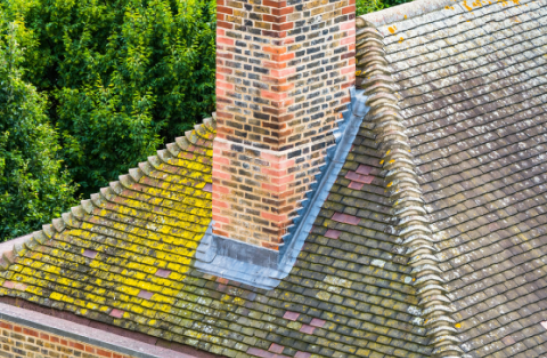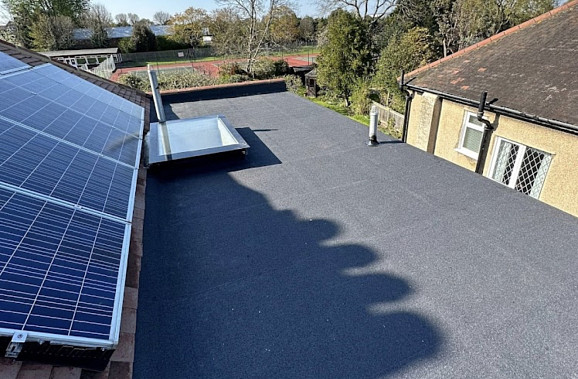Gutters are essential to your roof, but their importance is often overlooked. This article will share our roofing experience and explain why guttering is crucial for your roof and property's well-being. We will also cover the different types of guttering, common problems, and how best to keep your guttering in optimal condition.
Function Of Gutters
Gutters are usually long channels that run along the rooftop. They can be made from various materials, the most common being aluminium. They can also be made of plastic, steel or copper (a more expensive option). Each of these materials has advantages and disadvantages, which can be covered in another article. The primary function of guttering is to direct rainwater away from the roof and property, ideally into a working drain. Guttering can also be used to stop soil erosion or protect landscaping from heavy downpours. Effective guttering will also help reduce the likelihood of mould build-up, as it redirects water away from the property, reducing the necessary environment for mould to grow. They are a common sight on most buildings, helping to extend the lifespan of the roof and structure they protect.
Types Of Gutters
There are many varieties of guttering, often designed for specific purposes or conditions. Below are some of the more common gutter types.
Half-Round Gutters: As the name suggests, they consist of half a circle and are a common sight on many properties. They are smooth on the inside and often made of aluminium or vinyl. They are very effective at redirecting water. However, in areas where debris is a problem (such as trees), they tend to become blocked and require regular cleaning.
Square Gutters: Often referred to as box gutters, they are sleek designs that provide a clean look and feel. They are also prone to debris buildup. However, their shape makes them easier to clean and clear. Usually associated with more modern buildings and flat roofs.
Box Guttering: This type of guttering is built into the structure, such as the roof or wall, making it less noticeable and blending in far better. However, its shape makes it much more difficult to clean. They are usually made from steel and aluminium.
Deep Flow: Often used when there are higher-than-usual volumes of water or large roof areas that require additional flow capacity to help disperse water. It is important that your roofing specialists use supports capable of holding the extra weight of water they can carry. Due to their size and extra material used, they are usually more expensive.
Common Issues With Gutters
As with all building materials, over time, gutters will deteriorate and require maintenance or replacement. Usually, with a bit of attention and regular inspections, issues are minor. Some of the more common issues include:
Corrosion: A problem associated with gutters made from steel and iron, corrosion can cause potential rust issues due to their very nature and exposure to a wet environment. Corrosion can create leaks, weaken the structure, and make it look aesthetically unattractive.
Blockages: One of the most common causes is leaves and tree debris that builds up over time. Small objects can also cause blockages, often debris from the roof that has fallen off. Issues caused by blockages include potential water damage and flooding, mould buildup and possible structural damage from the constant weight of the water. Regular cleaning and roof guards can help alleviate this issue.
Incorrect angle: The correct angle for your guttering system is vital for effective drainage. Some common causes of incorrect angling include storm damage, improper installation, movement in the property, and lack of maintenance. As a rough guide, gutters should slope a quarter of an inch every ten feet, using solid brackets and adding extra supports where applicable.
Cracks: Age is often the cause of cracking. Over time, gutters can become brittle and succumb to the weather and wear. Another cause of cracks is using incorrect materials that are unsuitable for the weather conditions and building type. Cracks can often be repaired at little expense, using a sealant or replacing just the damaged area.
Loose Connectors: Loose connectors can cause serious gutter-related issues, including water damage and complete separation of the guttering. The older your guttering system, the more prone they are to connection issues. Regular maintenance and tightening of supporting brackets will help preserve the life of your system.
Pest Issues: Small animals such as birds and rats can cause blockages and damage your gutters. The shelter a guttering offers often attracts pests. Solutions to help stop pests include inserting guards, sealing up potential entry points, and conducting regular inspections for pest-related signs.
Gutter Add On
Many accessories can be added to gutters, some for purely aesthetic value and others to enhance their functionality.
Guards: Inserting a guard over your gutter will help keep it free from debris. If you live in a rural area with trees close by, they can also help prevent blockages.
Diverters: As the name suggests, diverters direct water flow to a specific area. They can help disperse water from large roofs during heavy rainfall or direct water towards collection tanks.
Water Tanks: Water from your roof can be diverted to water tanks, which can then be used to water your garden or clean your cars. Most water tanks are plastic and come in various shapes and sizes to suit your property type.
Strainers: They are located at the top of the downpipe and act as a barrier, stopping debris from entering. If you have easy and safe access to our guttering, they are easily installable and straightforward to clean out.
Decorative items: To enhance the appeal of your guttering, decorative items such as colour finishes, medallions, water flow chains and ornaments can be added. They offer little performance value but can transform the overall look and feel.
Summary
At Knights Roofing, we have years of experience in guttering-related services, including new system installation, maintenance, repairs, and inspections. If you need any further advice, contact Luke anytime for more information.




